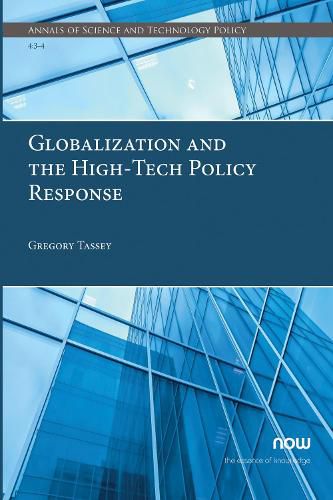Readings Newsletter
Become a Readings Member to make your shopping experience even easier.
Sign in or sign up for free!
You’re not far away from qualifying for FREE standard shipping within Australia
You’ve qualified for FREE standard shipping within Australia
The cart is loading…






This title is printed to order. This book may have been self-published. If so, we cannot guarantee the quality of the content. In the main most books will have gone through the editing process however some may not. We therefore suggest that you be aware of this before ordering this book. If in doubt check either the author or publisher’s details as we are unable to accept any returns unless they are faulty. Please contact us if you have any questions.
Globalization and the High-Tech Policy Response makes the case that U.S. economic growth policy has not responded to the growing competitive pressures from globalization. Specifically, the federal government has placed excessive reliance on business-cycle management and recently on trade barriers in the form of tariffs to allegedly force access to foreign markets for U.S. firms and repress unfair trade practices by foreign governments. The correct policy response requires an investment-oriented approach that targets the four major categories of assets that drive productivity growth and hence incomes: (1) technology, (2) physical and intellectual capital (hardware and software), (3) skilled labor, and (4) a high-tech infrastructure to support the first three asset categories. The focus of this monograph is the characterization of these four asset categories and the economic rationales for emphasizing investment in them. It systematically documents and analyzes the set of policies and investment trends and resulting impacts on rates of growth over the post World War II era. These trends highlight a very inadequate growth policy, which is the result of failing to admit that America’s dominant post-war position in the global economy has been steadily eroded by superior growth strategies in other economies.
$9.00 standard shipping within Australia
FREE standard shipping within Australia for orders over $100.00
Express & International shipping calculated at checkout
This title is printed to order. This book may have been self-published. If so, we cannot guarantee the quality of the content. In the main most books will have gone through the editing process however some may not. We therefore suggest that you be aware of this before ordering this book. If in doubt check either the author or publisher’s details as we are unable to accept any returns unless they are faulty. Please contact us if you have any questions.
Globalization and the High-Tech Policy Response makes the case that U.S. economic growth policy has not responded to the growing competitive pressures from globalization. Specifically, the federal government has placed excessive reliance on business-cycle management and recently on trade barriers in the form of tariffs to allegedly force access to foreign markets for U.S. firms and repress unfair trade practices by foreign governments. The correct policy response requires an investment-oriented approach that targets the four major categories of assets that drive productivity growth and hence incomes: (1) technology, (2) physical and intellectual capital (hardware and software), (3) skilled labor, and (4) a high-tech infrastructure to support the first three asset categories. The focus of this monograph is the characterization of these four asset categories and the economic rationales for emphasizing investment in them. It systematically documents and analyzes the set of policies and investment trends and resulting impacts on rates of growth over the post World War II era. These trends highlight a very inadequate growth policy, which is the result of failing to admit that America’s dominant post-war position in the global economy has been steadily eroded by superior growth strategies in other economies.